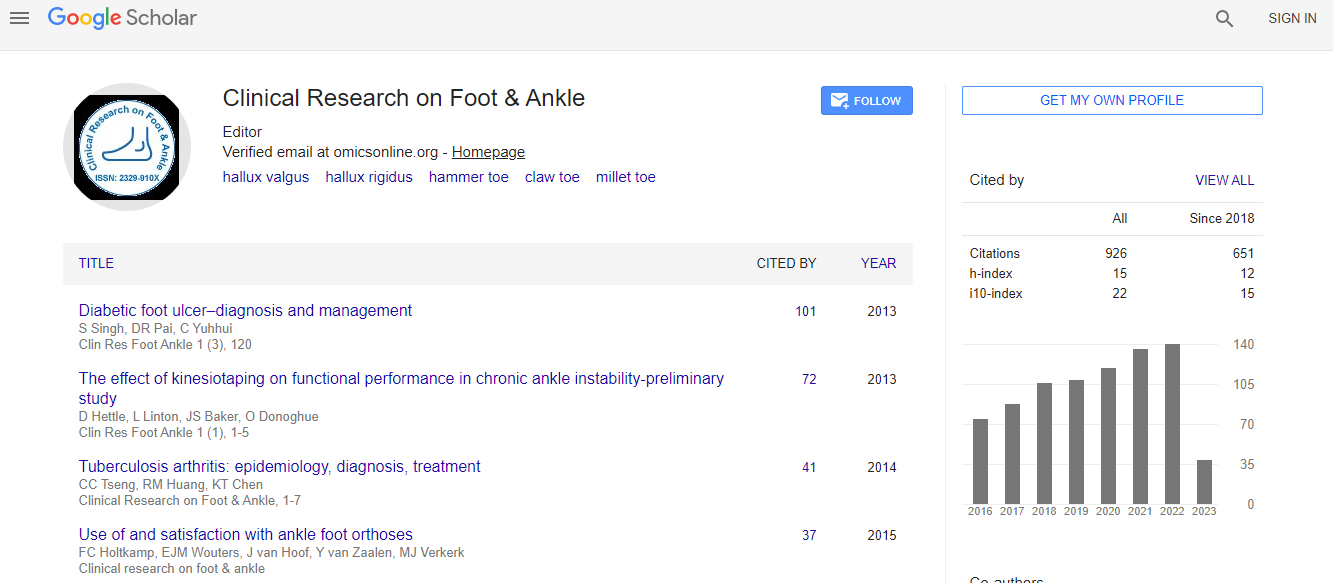Case Report
Supra Malleolar Osteotomies for Neglected Tibial Deformity Affecting the Ankle and Foot
Pasquale Cancelliere*DPM, MetroWest Medical Center, Framingham, MA, USA
- *Corresponding Author:
- Pasquale Cancelliere
DPM, Attending Surgeon, MetroWest Medical Center
Framingham, MA, USA
Tel: 1-978-810-5425
E-mail: drpc78@gmail.com
Received date:January 30, 2016; Accepted date: March 27, 2016; Published date: March 31, 2016
Citation: Cancelliere P (2016) âSupra Malleolar Osteotomies for Neglected Tibial Deformity Affecting the Ankle and Footâ. Clin Res Foot Ankle 4:192. doi:10.4172/2329-910X.1000192
Copyright: © 2016 Cancelliere P. This is an open-access article distributed under the terms of the Creative Commons Attribution License, which permits unrestricted use, distribution, and reproduction in any medium, provided the original author and source are credited.
Abstract
Ankle arthrosis continues to affect millions of people worldwide. Whereas it is not as common as hip and knee arthrosis in the aging population, it is more and more prevalent in the younger population. Also, it is not uncommon to see total destruction of the ankle joint in the neuropathic population. Whereas arthrosis of the knee and hip is mostly “wear and tear” type, the vast majority of ankle arthrosis is post traumatic. Because of this the likely hood of an underlying post traumatic deformity is high. Post Traumatic Deformity is often disabling particularly in the case of osteomyelitis treatment and open fractures with bone loss. This leads to a painful, non plantigrade, non functional limb. Consequently, the surgeon needs to perform complete and methodic pre-operative planning prior to performing any definitive reconstructive joint surgery.
Ankle arthrodesis continues to be the standard of care for end stage ankle arthrosis. It is a tried and true procedure that provides the surgeon and patient, predictable union rates, low rate of complications and ultimately, gives acceptable AOFAS score, indicating a good post-surgical quality of life to the patient. However, arthrodesis is not without disadvantages. Over the last 10 years, however total ankle replacement (TAR), has become a growing and more widely accepted alternative to arthrodesis. New systems have improved instrumentation, shorter operating room time and fewer complications as well as improved functional outcomes. This procedure is also not without significant possible complications and disadvantages. Also, distraction ankle arthroplasty has shown to provide favorable short term and medium term favorable outcomes.
However, regardless of the procedure selected by the surgeon and patient for the treatment of ankle arthritis, there is one principle that is ubiquitous but unfortunately often overlooked. This iatrogenic negligence leads to increased non-union rates, continued pain and ultimately loss of functionality of the limb. The authors of this paper have encountered several failed ankle arthrodeses and TAR’s because of this which required extensive revisional reconstructive surgery. Also, in the case of bony deformity, conservative measures such as braces, AFO’s will have disappointing results.

 Spanish
Spanish  Chinese
Chinese  Russian
Russian  German
German  French
French  Japanese
Japanese  Portuguese
Portuguese  Hindi
Hindi 
